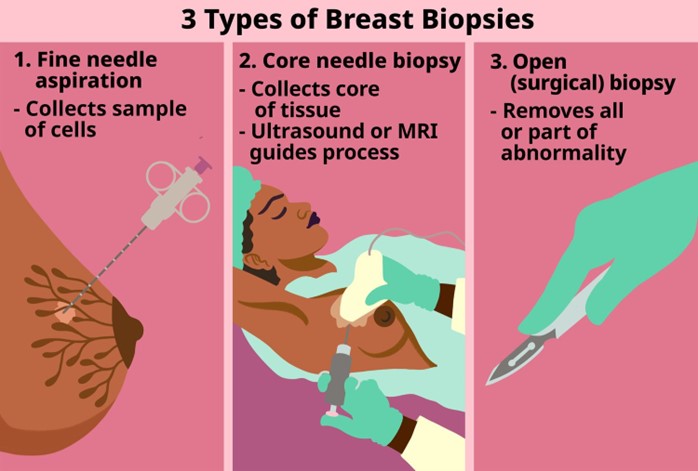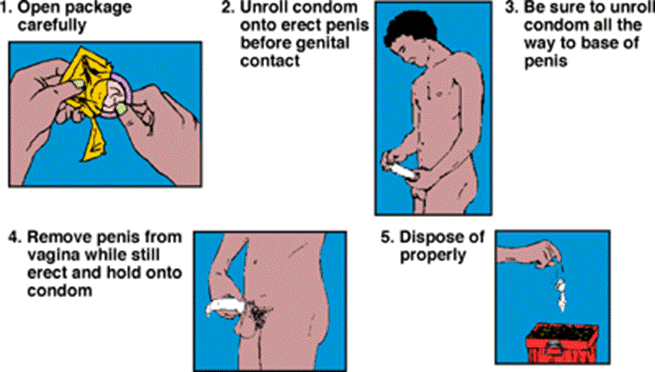A breast biopsy indicates the presence of malignant cells, and the client is scheduled for a mastectomy. When preparing the client's preoperative plan of care, which area would the nurse most likely address as the priority?
Fluid balance
Body image
Urinary elimination
Activity
The Correct Answer is B
Choice A: Fluid balance is not the most likely priority because it is not directly affected by the mastectomy. Fluid balance is the state of equilibrium between the intake and output of fluids in the body. It can be influenced by various factors such as hydration, nutrition, medication, or illness. It can be monitored by measuring vital signs, weight, urine output, or laboratory values. Fluid balance is important for maintaining homeostasis and preventing dehydration or edema, but it is not a specific concern for a client undergoing a mastectomy.
Choice B: Body image is the most likely priority because it is directly affected by the mastectomy. Body image is the perception and attitude that one has toward one's own physical appearance and function. It can be influenced by various factors such as culture, media, self-esteem, or feedback from others. It can be assessed by observing verbal and nonverbal cues, asking open-ended questions, or using standardized tools. Body image is a major psychosocial issue for a client undergoing a mastectomy, as it can affect one's sense of identity, femininity, sexuality, or attractiveness. The nurse should address body image by providing information, support, and referral to appropriate resources.
Choice C: Urinary elimination is not the most likely priority because it is not directly affected by the mastectomy. Urinary elimination is the process of expelling urine from the bladder through the urethra. It can be influenced by various factors such as fluid intake, kidney function, medication, or infection. It can be assessed by measuring urine volume, color, odor, or specific gravity. Urinary elimination is important for maintaining fluid balance and preventing urinary tract infection or retention, but it is not a specific concern for a client undergoing a mastectomy.
Choice D: Activity is not the most likely priority because it is not directly affected by the mastectomy. Activity is the level of physical movement and exercise that one engages in on a daily basis. It can be influenced by various factors such as age, health status, motivation, or environment. It can be assessed by observing mobility, endurance, strength, or coordination. Activity is important for maintaining muscle tone, joint range of motion, circulation, or metabolism, but it is not a specific concern for a client undergoing a mastectomy.

Nursing Test Bank
Naxlex Comprehensive Predictor Exams
Related Questions
Correct Answer is C
Explanation
Choice A: "Store your condoms in your wallet so they are ready for use." This statement is not correct and should not be included in the teaching plan. Storing condoms in a wallet can damage them by exposing them to heat, friction, or puncture. Damaged condoms can break or leak during sexual activity and increase the risk of STIs or pregnancy.
Choice B: "Use petroleum jelly with a latex condom for extra lubrication." This statement is not correct and should not be included in the teaching plan. Using petroleum jelly or any oil-based lubricant with a latex condom can weaken the latex material and cause it to break or slip off. Only water-based or silicone-based lubricants should be used with latex condoms.
Choice C: "Put the condom on before engaging in any genital contact." This statement is correct and should be included in the teaching plan. Putting the condom on before engaging in any genital contact can prevent the transmission of STIs or pregnancy by avoiding contact with pre-ejaculate fluid, semen, or vaginal fluid.
Choice D: "You can reuse a condom if it's within 3 hours." This statement is not correct and should not be included in the teaching plan. Reusing a condom can increase the risk of STIs or pregnancy by exposing the partner to residual fluid, bacteria, or sperm. A new condom should be used for each sexual act.

Correct Answer is ["A","C","E"]
Explanation
Choice A: Sleep disturbances are the correct answer because they are a symptom of a heart attack observed in women. Sleep disturbances are problems that affect the quality or quantity of sleep, such as insomnia, nightmares, or snoring. They can indicate that the heart is not pumping enough blood and oxygen to meet the body's needs during sleep. About 48% of women who have had a heart attack report having sleep disturbances in the weeks before their event.
Choice B: Syncope is not the correct answer because it is not a symptom of a heart attack observed in women. Syncope is a condition that causes a temporary loss of consciousness due to a drop in blood pressure or blood flow to the brain. It can be caused by various factors such as dehydration, medication side effects, or cardiac arrhythmias. However, it is not a common sign of a heart attack in women, and only about 12% of women who have had a heart attack report having syncope before their event.
Choice C: Unusual fatigue is the correct answer because it is a symptom of a heart attack observed in women. Unusual fatigue is a feeling of extreme tiredness or exhaustion that is not relieved by rest or sleep. It can indicate that the heart is not pumping enough blood and oxygen to meet the body's needs during daily activities. About 70% of women who have had a heart attack report having unusual fatigue in the weeks before their event.
Choice D: Extreme hunger is not the correct answer because it is not a symptom of a heart attack observed in women. Extreme hunger is a feeling of intense or excessive appetite or craving for food. It can be caused by various factors such as diabetes, thyroid disorder, or stress. However, it is not a sign of a heart attack in women, and only about 4% of women who have had a heart attack report having extreme hunger before their event.
Choice E: Arm pain is the correct answer because it is a symptom of a heart attack observed in women. Arm pain is a feeling of discomfort or ache in one or both arms, especially the left arm. It can indicate that the heart muscle is not receiving enough blood and oxygen due to a blocked coronary artery. About 42% of women who have had a heart attack report having arm pain before their event.
Whether you are a student looking to ace your exams or a practicing nurse seeking to enhance your expertise , our nursing education contents will empower you with the confidence and competence to make a difference in the lives of patients and become a respected leader in the healthcare field.
Visit Naxlex, invest in your future and unlock endless possibilities with our unparalleled nursing education contents today
Report Wrong Answer on the Current Question
Do you disagree with the answer? If yes, what is your expected answer? Explain.
Kindly be descriptive with the issue you are facing.
